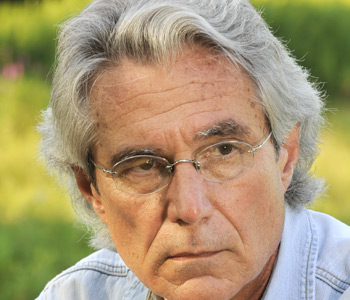Paul Zehr
Becoming Batman: The Possibility of a Superhero
Johns Hopkins University Press
328 pages, 81/2 x 6 inches
ISBN 978 0801890635
Becoming Batman is an examination of a superhero. I was trying to answer a simple question: Is it actually possible for any human to attain the skills and abilities of Batman? Batman is the perfect superhero about whom to ask this question as there is nothing supernatural about his abilities. Batman is a man in disguise, with powers that seem within reach. Because I am a professor who studies the control of movement, my lifelong passions place me in an expert position to attempt to search out and answer questions relating to the feasibility of a real-life superhero like Batman.
My main motivation behind writing the book was my passion for the popularization of science. I think scientists should sometimes try the extra effort to translate science into terms that are accessible to the general public. I have a background in kinesiology and neuroscience, many years training in martial arts and an interest in comic books. In the “DC Universe,” Batman is the most highly trained and skilled in martial arts, and he is also a scientist. So, I decided to write something about how the body works and responds to training using Batman as the metaphor for the pinnacle of human performance. A key thing about Batman’s main mystique is that he is a human being who is “self made.” This makes it seem that it might really be possible for Batman to exist. So, I decided to explore and examine the actual scientific basis for this.
Becoming Batman provides the background for people to understand how their bodies work and how they respond to exercise and training. In examining the possibility of a superhero, I explore the science of stress, exercise and injury using the life of one of pop culture's biggest icons. Becoming Batman also tries to challenge the mystique of the reality of Batman and is thus provocative.

Becoming Batman provides the background for people to understand how their bodies work and how they respond to exercise and training. In examining the possibility of a superhero, I explore the science of stress, exercise and injury using the life of one of pop culture's biggest icons.
The main concept under the surface of Becoming Batman is that of stress and adaptation. All responses of the body to exercise, training, and skill learning involve the principle that adaptations occur to minimize the effect of the stress. We strain to lift heavy weights and our muscles respond by getting stronger. They get stronger so that the stress of lifting the weights becomes less. The bones of our legs change in density if we start running. Again, this is to minimize the effect of the stress of the impact loading during running.
There are also many neuroscience concepts related to repetitive practice for skill learning and maintaining motor skills like martial arts that the book highlights. In particular, Becoming Batman describes the neuroscience/neuropsychology concepts of focus, behavioural set, and the relationship between arousal and performance. Related to this are key concepts on regulating the response to pain and ignoring discomfort arising from injuries.
My career path in science actually arose from my early study of martial arts. I started training when I was 13 and grew fascinated with not just doing martial arts but how crazily complicated it must be for the body to do all the things I was able to do—and which my teachers were able to do better. That brought me to kinesiology at the university (Bachelor’s and Master’s degrees) where I actually did several studies on aspects of martial arts. Then I got interested generally in the neural control of movement and rehabilitation of walking after stroke and spinal cord injury, which is my scientific area now. Extremely high-level performance such as training to become Batman, and rehabilitation to improve walking after stroke and spinal cord injury are just different points on a continuum of performance. All the basic principles in terms of how the body responds to stress and training are the same, just applied slightly differently. In many ways, my career path appears to have been slightly circular.
Chapter 13 is entitled “Injury and Recovery: How Much Banging until the Batback Goes Bonk?” When thinking of Batman, people tend to often think of his gear and technology, often overlooking that Batman’s fragile human body is inside all that gear and tech. A body is getting bashed around inside the Batsuit. So, while Batman may not have a lot of cuts, he will have loads of bruises, crush injuries, and concussions. There would be the cumulative effect of injuries and the stresses and strains of pushing his body so much and being pummeled so often. It is realistic to imagine that a person could sustain some of the beatings he takes and survives. However, to be repeatedly subjected to such beatings, and survive, and still beat all attackers is not realistic. Neither is the lack of concussions. Batman would have a concussion from almost every encounter he is shown in. This includes falling off buildings or slamming into walls (or cars, or… whatever).
Related to this idea of the body inside the suit is the need for Batman to deliberately try to get his body ready for fighting. When Batman hits the goons of Gotham, the forces involved hit him right back! In chapter 11, “Hardening the Batbody: Can sticks and stones break his bones?” readers would find out about how important special techniques of body conditioning would be to Batman. He needs to train the bones of his arms and hands to be able to withstand these forces. This requires hitting hard objects. The bones of his legs are pounded into the ground on a daily basis so they are well conditioned. However, since Batman doesn’t run around on his hands, his arms need special training. This is a common principle of many martial arts traditions and Batman would need to use it.

All responses of the body to exercise, training, and skill learning involve the principle that adaptations occur to minimize the effect of the stress.
The bottom line of Becoming Batman is to get across the idea that the human body has tremendous capacity for adaptation. Given the necessary combination of genetics, training, drive, skill, and lots of money it is physically possible for a very unique and special human being to become Batman. But, due to all the stresses and injuries, it would take a really long time and it would be difficult to actually be Batman for long. The idea of becoming Batman is really a metaphor for human performance. Exploring this metaphor, the book’s most important point is that we humans have tremendous potential to tap into and use to achieve what we set out to achieve.
The key to unlocking the inner superhero in all of us is always doing the best we can at every single thing we do and never giving in or giving up. If there is one real-life lesson from Batman, that is it. We all have a bit of Batman deep inside of us. It is up us to find it and put it to use.




We don't put paywalls. We don't distract you with ads. We don't sell your data.
Please help to keep this running!